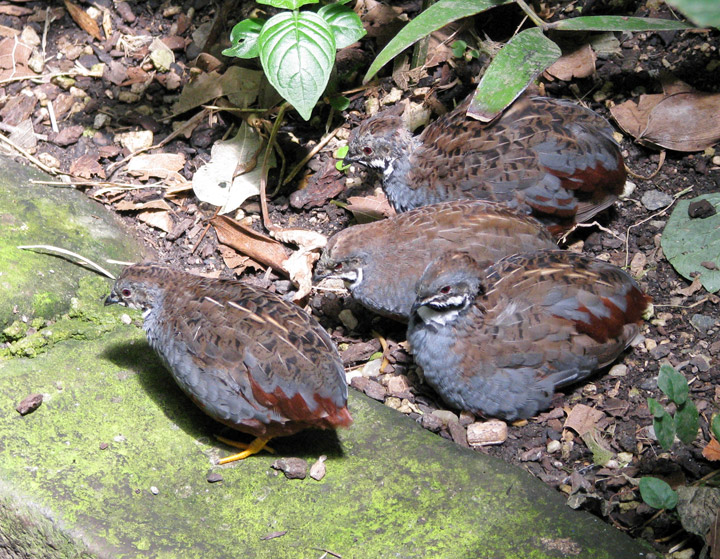

Butterflies
in the butterfly house of the Dunedin Museum
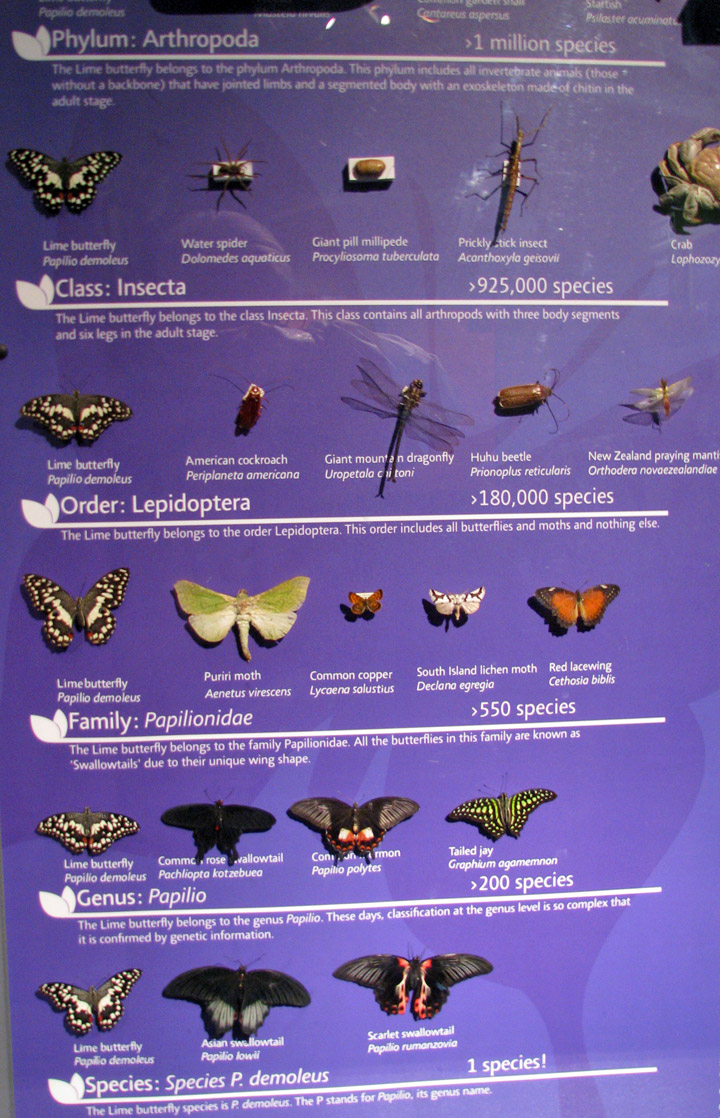
A butterfly is an insect of the order Lepidoptera. Like all Lepidoptera, butterflies are notable for their unusual life cycle with a larval caterpillar stage, an inactive pupal stage, and a spectacular metamorphosis into a familiar and colourful winged adult form. Most species are day-flying so they regularly attract attention. The diverse patterns formed by their brightly coloured wings and their erratic yet graceful flight have made butterfly watching a fairly popular hobby. Butterflies comprise the true butterflies (superfamily Papilionoidea), the skippers (superfamily Hesperioidea) and the moth-butterflies (superfamily Hedyloidea). Butterflies exhibit polymorphism, mimicry and aposematism. Some migrate over long distances. Some butterflies have evolved symbiotic and parasitic relationships with social insects such as ants. Butterflies are important economically as agents of pollination. In addition, a few species are pests, because they can damage domestic crops and trees in their larval stage.
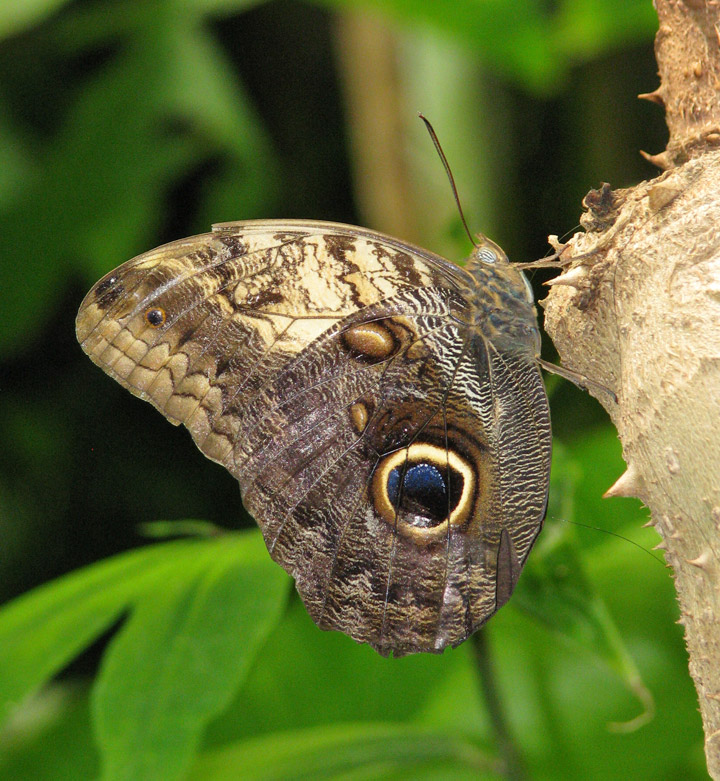
Culturally, butterflies are a popular motif in the visual and literary arts.
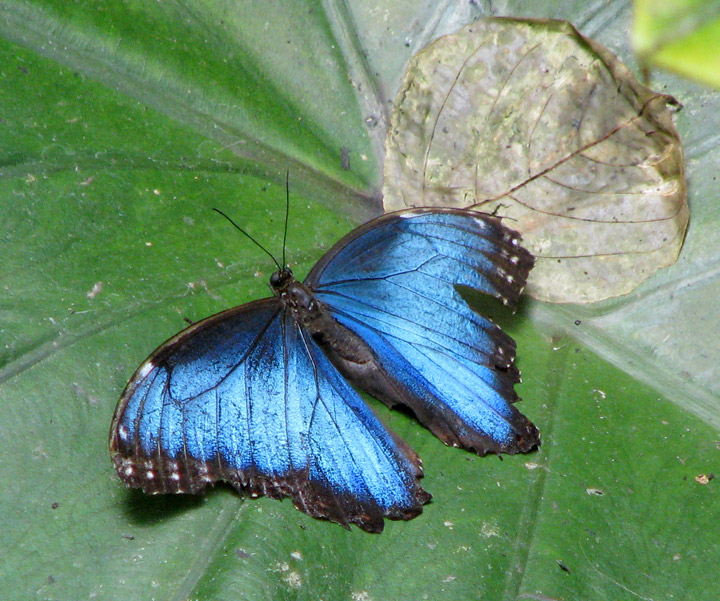
Unlike many insects, butterflies do not experience a nymph period, but instead
go through a pupal stage which lies between the larva and the adult stage (the
imago). Butterflies are termed as holometabolous insects, and go through
complete metamorphosis.

It is a popular belief that butterflies have very short life spans. However,
butterflies in their adult stage can live from a week to nearly a year depending
on the species. Many species have long larval life stages while others can
remain dormant in their pupal or egg stages and thereby survive winters.
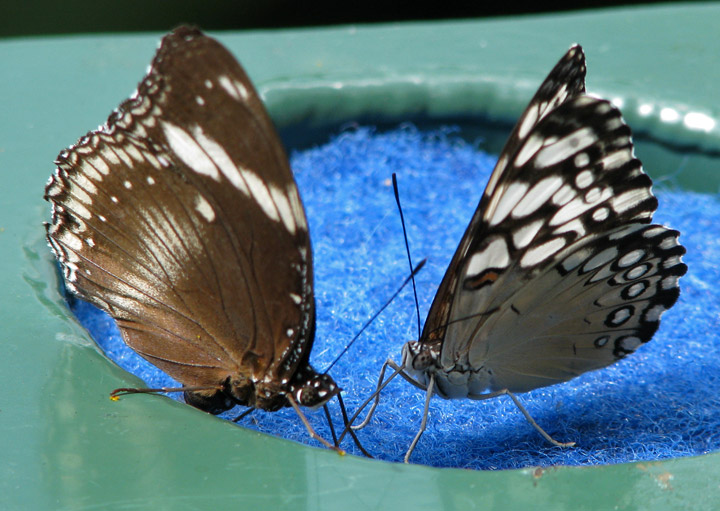
Butterflies may have one or more broods per year. The number of generations per
year varies from temperate to tropical regions with tropical regions showing a
trend towards multivoltinism.
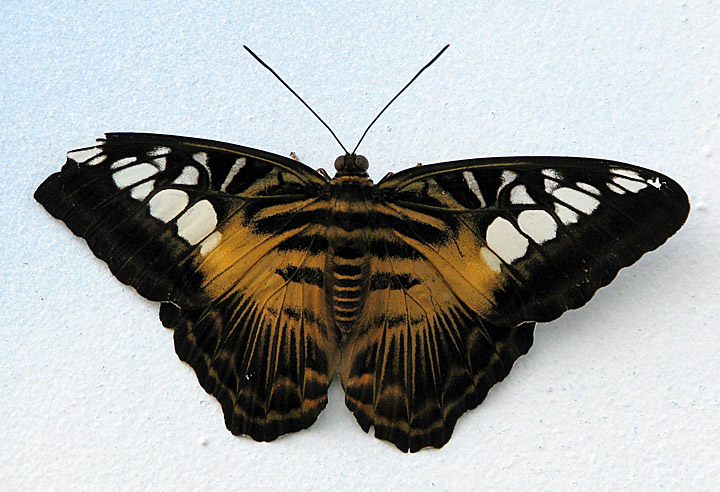
Butterfly eggs consist of a hard-ridged outer layer of shell, called the chorion.
This is lined with a thin coating of wax which prevents the egg from drying out
before the larva has had time to fully develop. Each egg contains a number of
tiny funnel-shaped openings at one end, called micropyles; the purpose of these
holes is to allow sperm to enter and fertilize the egg. Butterfly and moth eggs
vary greatly in size between species, but they are all either spherical or
ovate.

Butterfly eggs are fixed to a leaf with a special glue which hardens rapidly. As
it hardens it contracts, deforming the shape of the egg. This glue is easily
seen surrounding the base of every egg forming a meniscus. The nature of the
glue is unknown and is a suitable subject for research. The same glue is
produced by a pupa to secure the setae of the cremaster. This glue is so hard
that the silk pad, to which the setae are glued, cannot be separated.
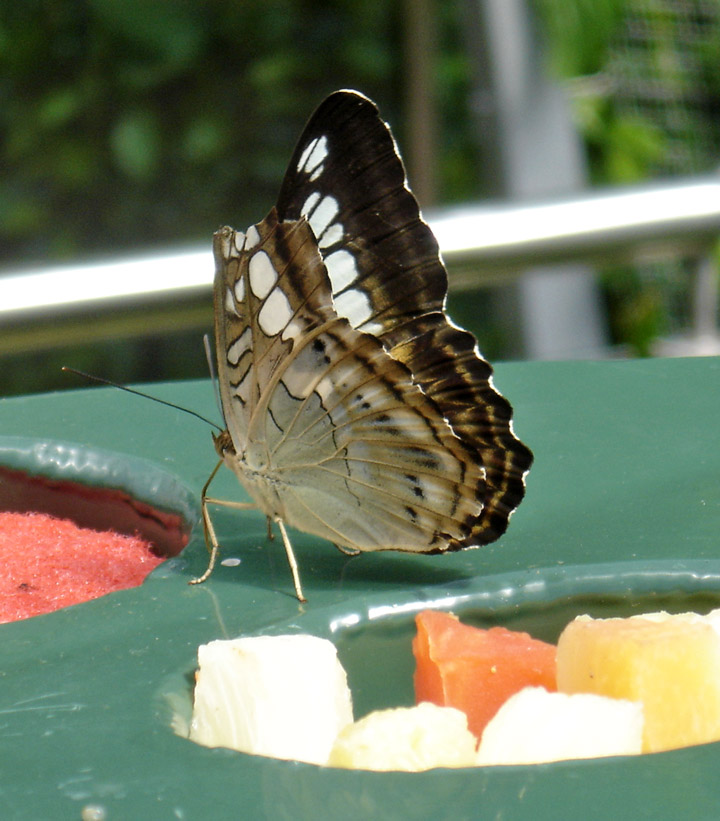
Eggs are usually laid on plants. Each species of butterfly has its own host
plant range and while some species of butterfly are restricted to just one
species of plant, others use a range of plant species, often including members
of a common family.
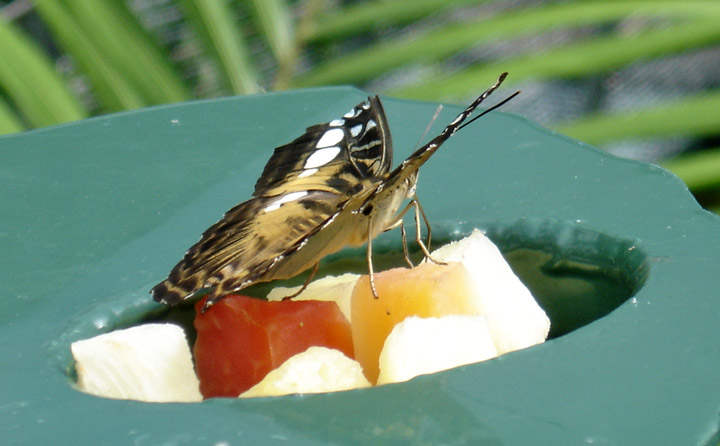
The egg stage lasts a few weeks in most butterflies but eggs laid close to
winter, especially in temperate regions, go through a diapause stage, and the
hatching may take place only in spring. Other butterflies may lay their eggs in
the spring and have them hatch in the summer. These butterflies are usually
northern species (Mourning Cloak, Tortoiseshells)
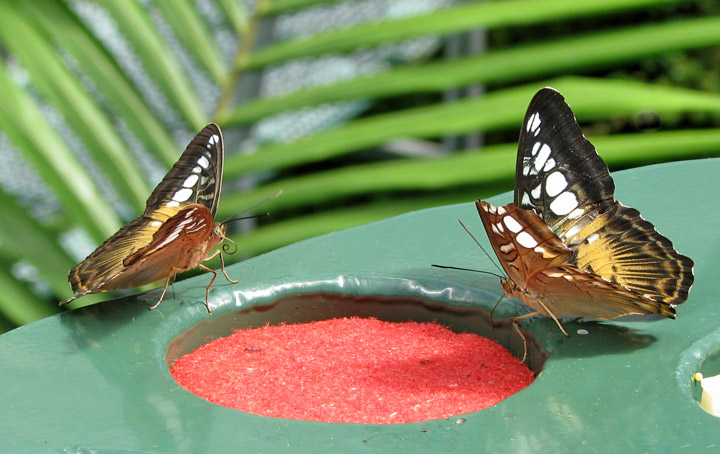
Butterfly larvae, or caterpillars, consume plant leaves and spend practically
all of their time in search of food. Although most caterpillars are herbivorous,
a few species such as Spalgis epius and Liphyra brassolis are entomophagous
(insect eating).
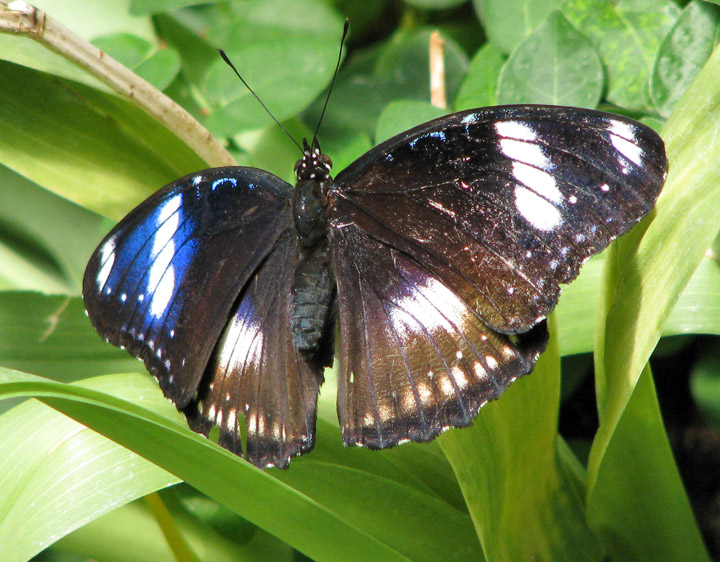
jfsdklfale Some larvae, especially those of the Lycaenidae, form mutual
associations with ants. They communicate with the ants using vibrations that are
transmitted through the substrate as well as using chemical signals. The ants
provide some degree of protection to these larvae and they in turn gather
honeydew secretions.
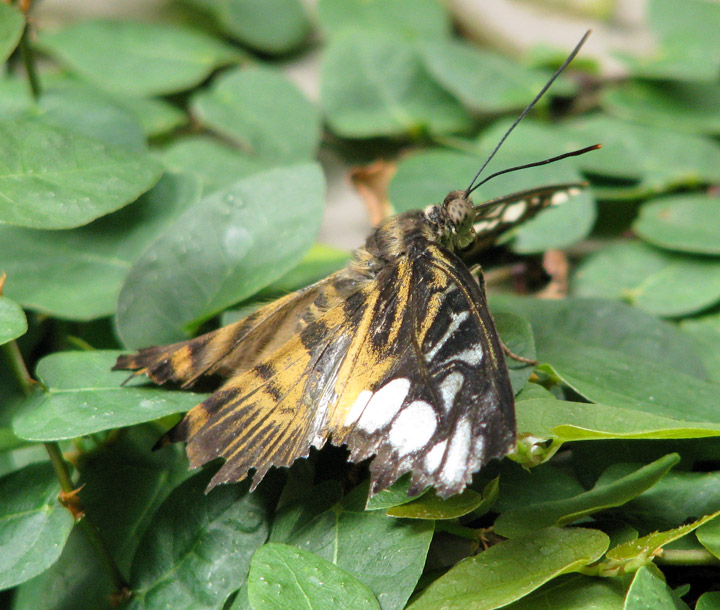
Caterpillars mature through a series of stages called instars. Near the end of
each instar, the larva undergoes a process called apolysis, in which the
cuticle, a mixture of chitin and specialized proteins, is released from the
epidermis and the epidermis begins to form a new cuticle beneath. At the end of
each instar, the larva moults the old cuticle, and the new cuticle rapidly
hardens and pigments. Development of butterfly wing patterns begins by the last
larval instar.

Butterfly caterpillars have three pairs of true legs from the thoracic segments
and up to 6 pairs of prolegs arising from the abdominal segments. These prolegs
have rings of tiny hooks called crochets that help them grip the substrate.
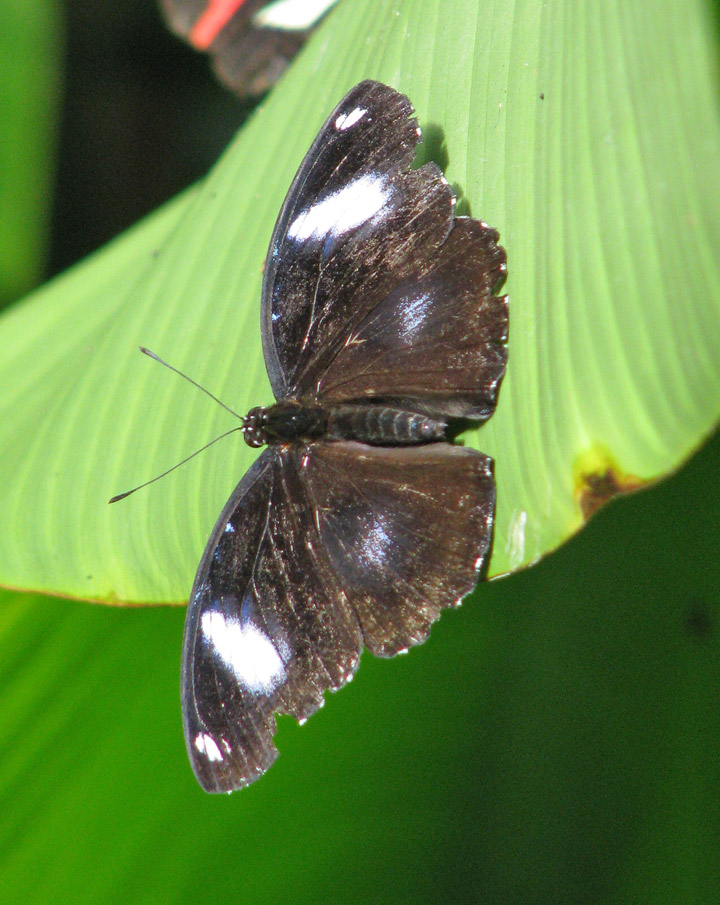
Some caterpillars have the ability to inflate parts of their head to appear
snake-like. Many have false eye-spots to enhance this effect. Some caterpillars
have special structures called osmeteria which are everted to produce smelly
chemicals. These are used in defense.
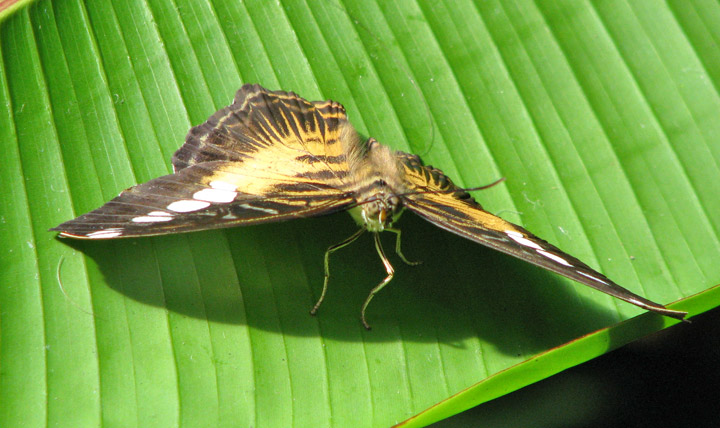
Host plants often have toxic substances in them and caterpillars are able to
sequester these substances and retain them into the adult stage. This helps
making them unpalatable to birds and other predators. Such unpalatibility is
advertised using bright red, orange, black or white warning colours. The toxic
chemicals in plants are often evolved specifically to prevent them from being
eaten by insects. Insects in turn develop countermeasures or make use of these
toxins for their own survival. This "arms race" has led to the coevolution of
insects and their host plants.
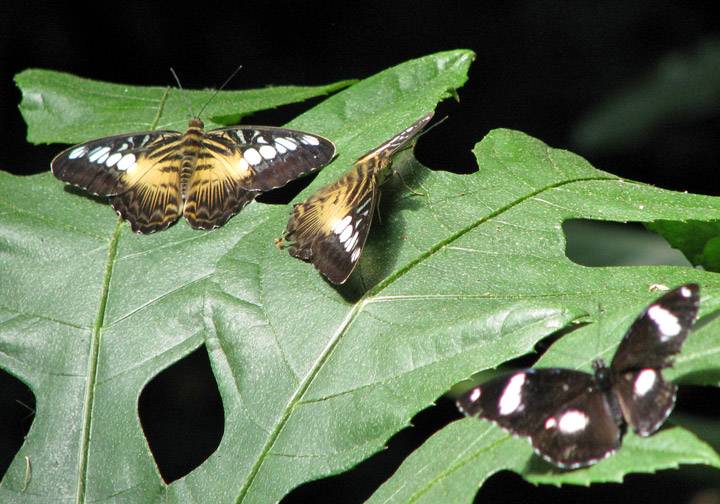
Wings or wing pads are not visible on the outside of the larva, but when larvae
are dissected, tiny developing wing disks can be found on the second and third
thoracic segments, in place of the spiracles that are apparent on abdominal
segments. Wing disks develop in association with a trachea that runs along the
base of the wing, and are surrounded by a thin peripodial membrane, which is
linked to the outer epidermis of the larva by a tiny duct.

Wing disks are very small until the last larval instar, when they increase
dramatically in size, are invaded by branching tracheae from the wing base that
precede the formation of the wing veins, and begin to develop patterns
associated with several landmarks of the wing.
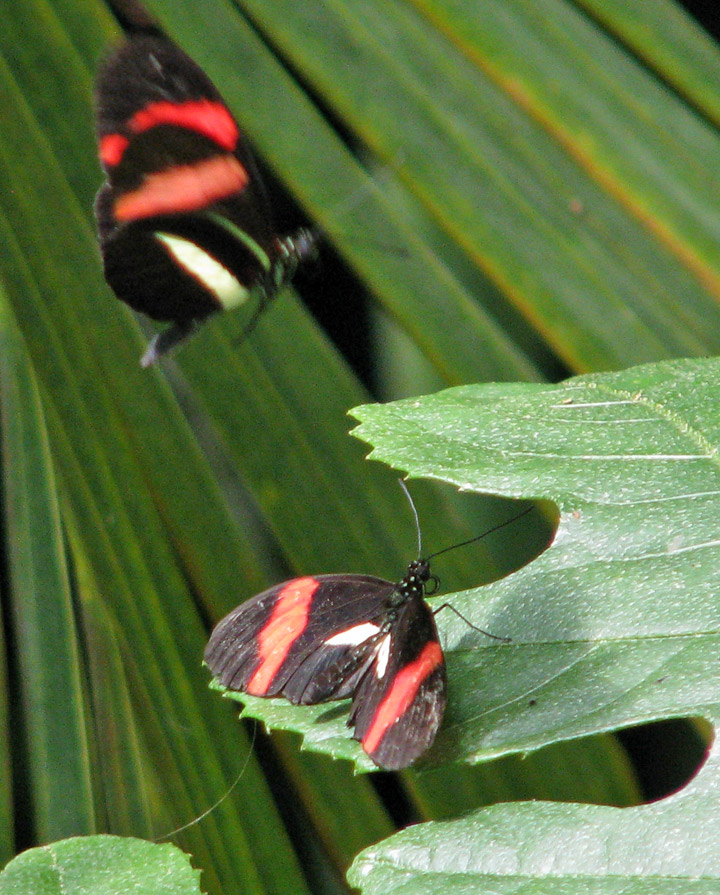
Near pupation, the wings are forced outside the epidermis under pressure from
the hemolymph, and although they are initially quite flexible and fragile, by
the time the pupa breaks free of the larval cuticle they have adhered tightly to
the outer cuticle of the pupa (in obtect pupae). Within hours, the wings form a
cuticle so hard and well-joined to the body that pupae can be picked up and
handled without damage to the wings.

When the larva is fully grown, hormones such as prothoracicotropic hormone (PTTH)
are produced. At this point the larva stops feeding and begins "wandering" in
the quest of a suitable pupation site, often the underside of a leaf.
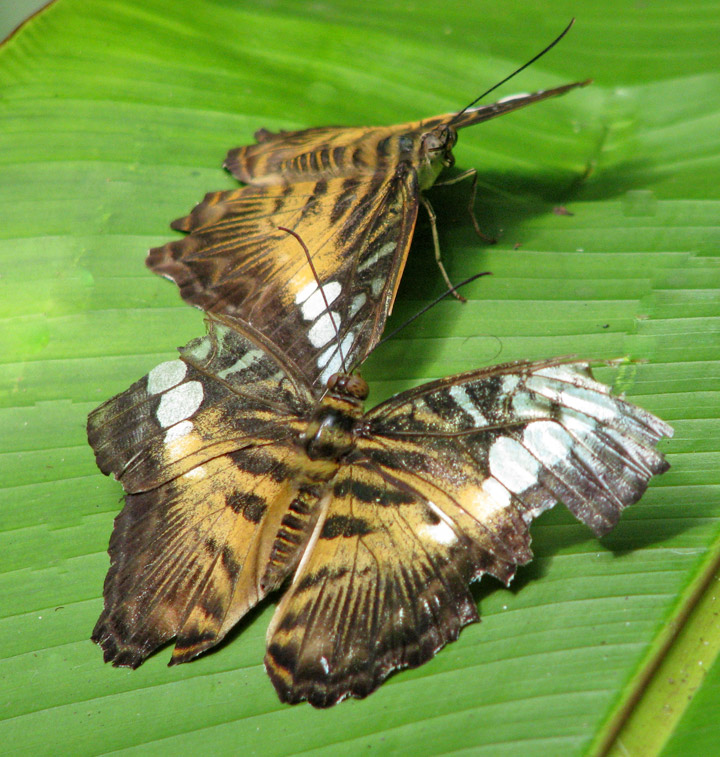
The larva transforms into a pupa (or chrysalis) by anchoring itself to a
substrate and moulting for the last time. The chrysalis is usually incapable of
movement, although some species can rapidly move the abdominal segments or
produce sounds to scare potential predators.
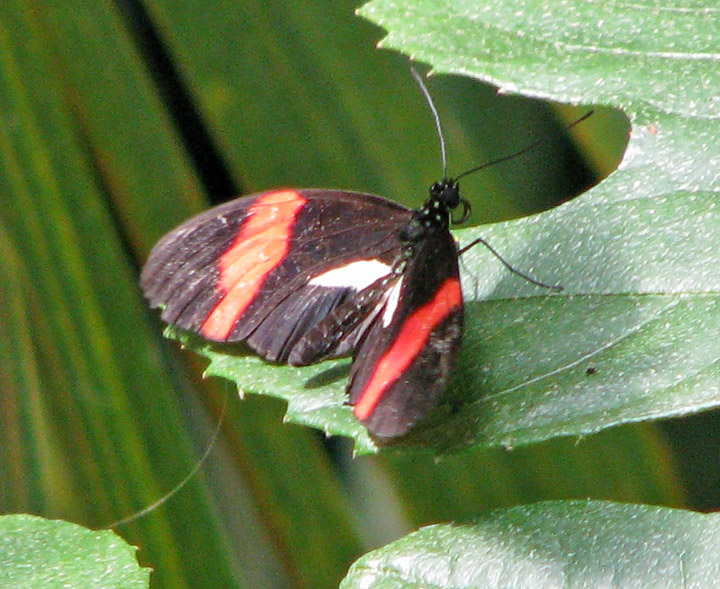
The pupal transformation into a butterfly through metamorphosis has held great
appeal to mankind. To transform from the miniature wings visible on the outside
of the pupa into large structures usable for flight, the pupal wings undergo
rapid mitosis and absorb a great deal of nutrients. If one wing is surgically
removed early on, the other three will grow to a larger size. In the pupa, the
wing forms a structure that becomes compressed from top to bottom and pleated
from proximal to distal ends as it grows, so that it can rapidly be unfolded to
its full adult size. Several boundaries seen in the adult color pattern are
marked by changes in the expression of particular transcription factors in the
early pupa.
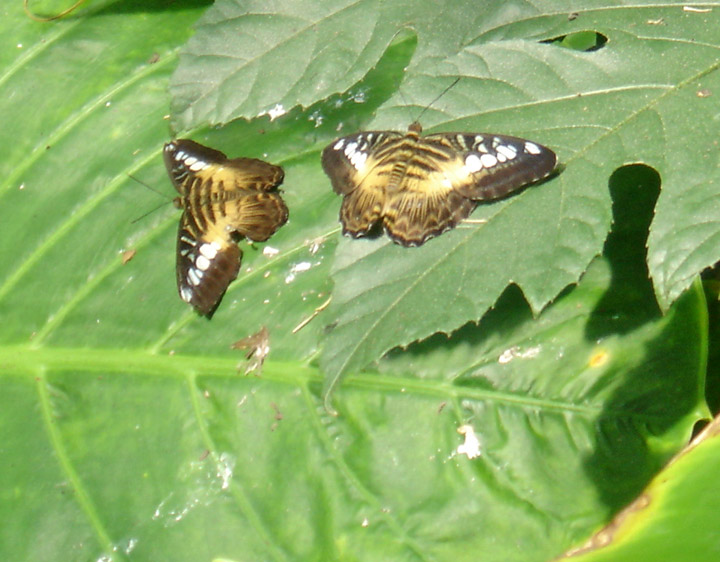
The adult, sexually mature, stage of the insect is known as the imago. As
Lepidoptera, butterflies have four wings that are covered with tiny scales (see
photo). The fore and hindwings are not hooked together, permitting a more
graceful flight. An adult butterfly has six legs, but in the nymphalids, the
first pair is reduced. After it emerges from its pupal stage, a butterfly cannot
fly until the wings are unfolded. A newly-emerged butterfly needs to spend some
time inflating its wings with blood and letting them dry, during which time it
is extremely vulnerable to predators. Some butterflies' wings may take up to
three hours to dry while others take about one hour. Most butterflies and moths
will excrete excess dye after hatching. This fluid may be white, red, orange, or
in rare cases, blue.
Text from Wikipedia
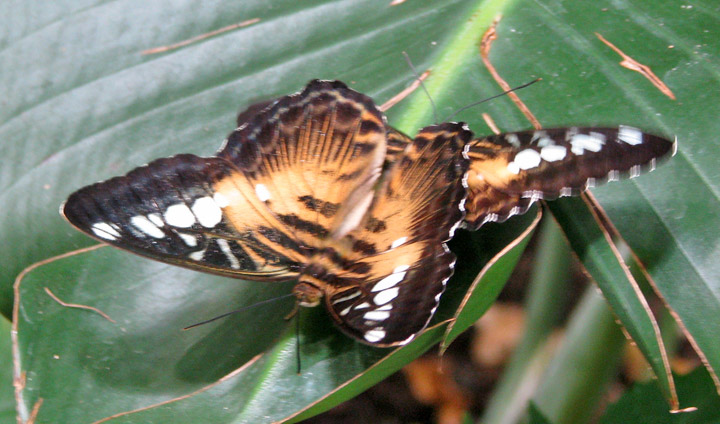
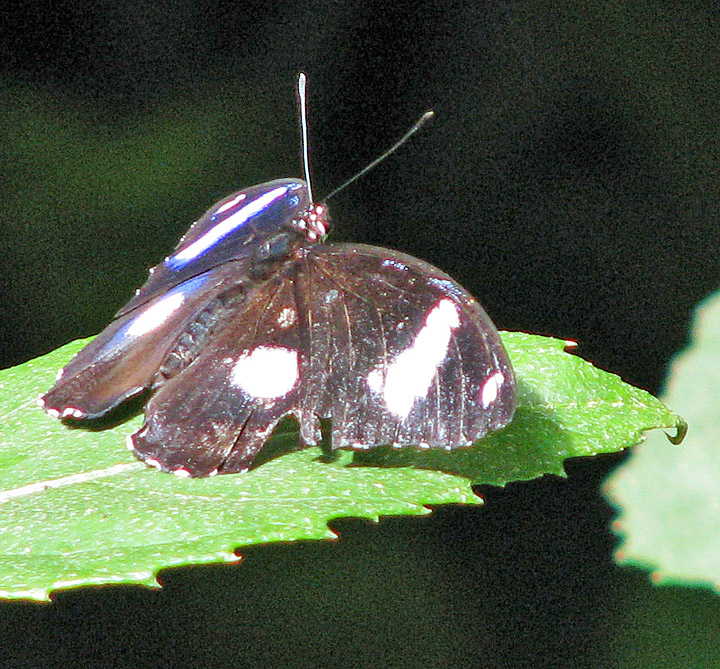
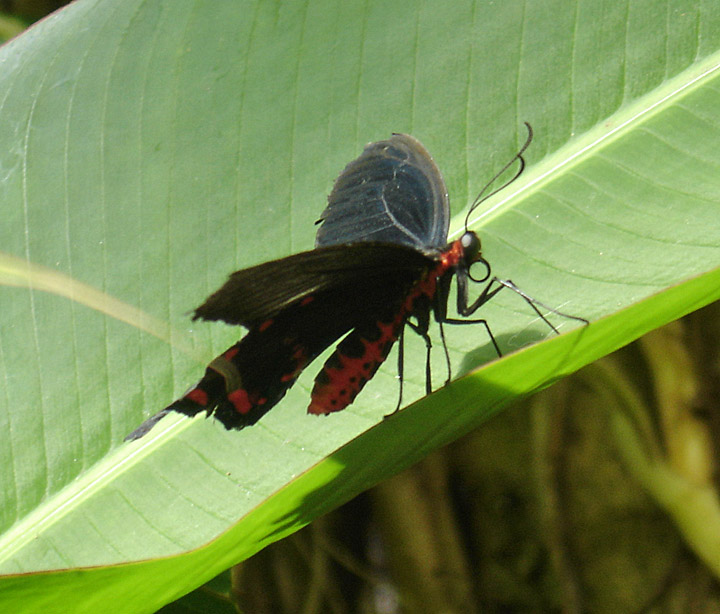
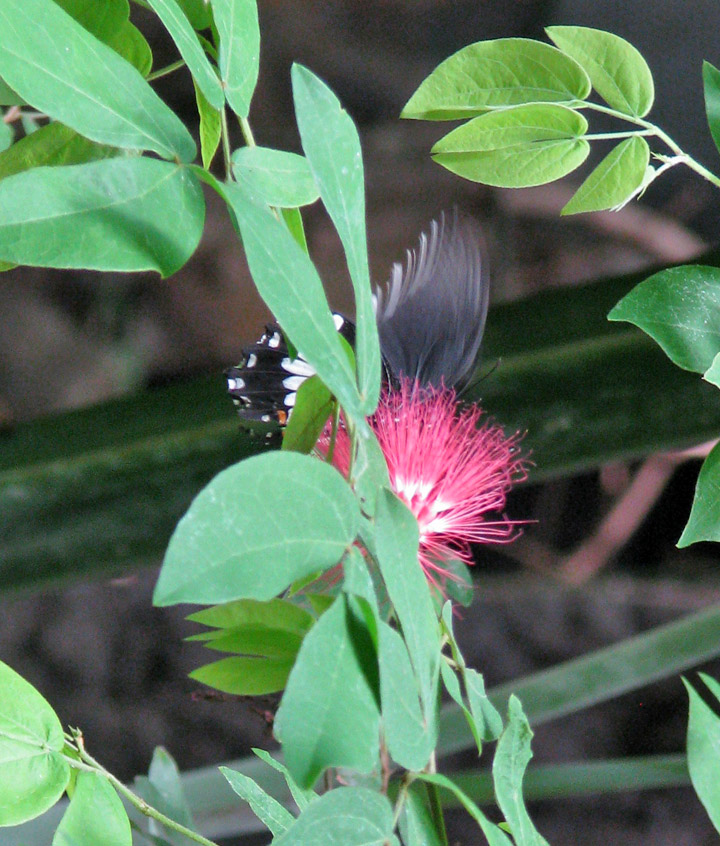
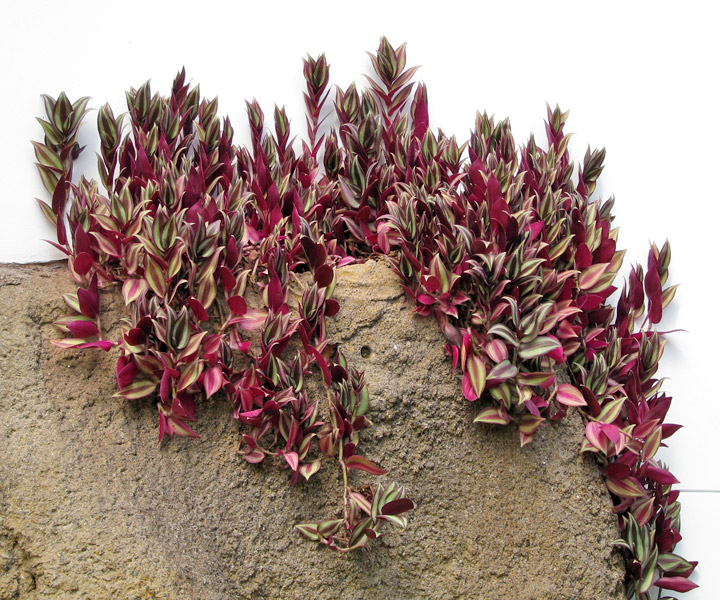

the butterfly enclosure

high walkway
